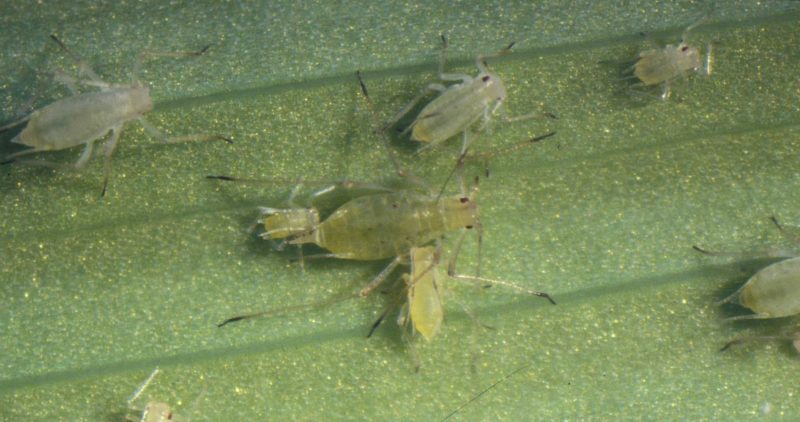
Ryanodine Receptor Modulators — IRAC Group 28
Question: I have heard there are a number of new insecticides associated with the Insecticide Resistance Action Committee (IRAC) group 28. Can you please provide information on this group of insecticides?
Answer: Yes, there are three insecticides in the chemical class antranile diamide that are in the IRAC group 28 registered for use in greenhouse production systems. These include: cyantraniliprole (Mainspring), cyclaniliprole (Sarisa)
and chlorantraniliprole (Acelepyrn). The insecticides are labeled for use against sucking and chewing insect pests, and are slower-acting than other insecticides due to their low water solubility, which ranges from 0.15 to 14.2 mg/L.
INSECTICIDES
Cyantraniliprole (Mainspring, Syngenta Crop Protection LLC) can be applied as a foliar spray or drench to the growing medium. The insecticide is labeled for use against aphids, leaf-feeding beetles, leaf-feeding caterpillars, thrips and whiteflies. The restricted entry interval (REI) of the product is four hours. Cyantraniliprole has contact, translaminar and systemic activity. When applied to the growing medium as a drench, cyantraniliprole may provide between eight to 12 weeks of activity (insect control).
Cyclaniliprole (Sarisa, OHP Inc.) can only be applied as a foliar spray. The insecticide is labeled for use against aphids, leaf-feeding caterpillars, mealybugs, thrips and whiteflies. The product has a four-hour REI. Cyclaniliprole has contact and translaminar activity, and provides between three to four weeks of residual activity (insect control) when applied to plant leaves.
Chlorantraniliprole (Acelepryn, Syngenta Crop Protection LLC) can be applied as a foliar spray or drench to the growing medium. The insecticide is labeled for use against aphids and leaf-feeding caterpillars. The REI of the product is four hours. Chlorantraniliprole has contact, translaminar and systemic activity.
MODE OF ACTION
The three insecticides described above are ryanodine receptor modulators. Calcium (Ca2+) is involved in many biological processes including muscle contraction and neurotransmitter release. When the calcium channels are normally activated, calcium ions flow into muscle fibers, thus stimulating contraction. The ryanodine receptors (or channels) are responsible for regulating the release of internal calcium stores into the cytoplasm (all the material within a cell enclosed by the cell membrane with the exception of the cell nucleus) of insects and mammals.
The anthranilic diamide or ryanodine receptor modulator insecticides work by binding to and activating the ryanodine receptors, causing the calcium channels to remain partially open, resulting in excessive and uncontrollable release of stored calcium ions into the muscles. Consequently, the release of calcium ions into the muscles disrupts normal functioning; thus leading to muscular contractions, paralysis and eventually death.
Ryanodine, a natural insecticide, is a plant metabolite derived from Ryania speciosa. Ryanodine acts by interfering with muscle contraction, which influences the release of calcium through binding with ryanodine receptors. This action keeps the channels partially opened, leading to the uncontrollable release of calcium stores.
It is important to understand the modes of action of currently available insecticides (and miticides) so that you, the greenhouse producer, can develop rotation programs that involve rotating insecticides with different modes of action to avoid insect pests from developing resistance.


 Video Library
Video Library 



















